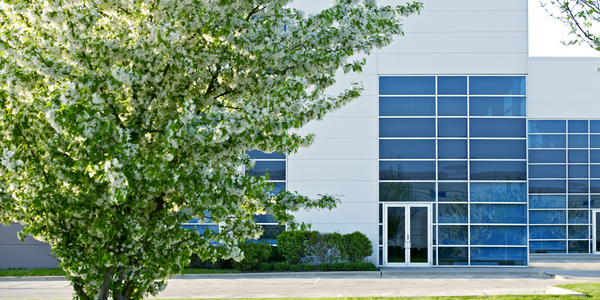技术
- 平台即服务 (PaaS) - 应用开发平台
适用行业
- 水泥
适用功能
- 产品研发
服务
- 系统集成
关于客户
贝德福德逃生室是一个独特的娱乐场所,提供密室逃脱体验。该公司需要一个高效的在线展示和预订系统来管理其运营并提供有关其服务的信息。该公司的网站 bedfordescaperooms.co.uk 是 Bedford Escape Room Ltd 的在线展示和预订系统。该网站包含逃生室及其提供的服务的概述,并具有定制的预订系统。该公司计划增加一个额外的逃生室,并考虑在未来提供不同的支付解决方案。
挑战
贝德福德逃生室是一个独特的娱乐场所,需要一个无缝且无故障的预约系统。现有系统的效率不足以处理预订流程,因此需要一种可以由客户通过定制管理系统轻松调整的解决方案。我们面临的挑战是创建一个可以处理预订流程的系统,提供密室逃脱及其提供的服务的概述,并且还包括定制预订时段系统等功能。该系统还需要能够处理优惠和新闻更新,以及专门的预订、礼品和信息页面。
解决方案
Bubble 的无代码平台被选为贝德福德逃生室挑战的解决方案。该平台允许创建一个满足贝德福德逃生室所需的所有规格的系统。选择无代码 Web 应用程序构建器是因为它能够共享网站原型并使用任何第三方插件来实现精确的规范。该平台还允许快速部署,对设计或可用性零妥协。所有主要第三方服务(例如 Stripe)使用现成插件是选择 Bubble 的另一个原因。该平台还允许与客户密切合作,使用应用程序的测试版本来演示功能如何工作并随着开发的进展获得反馈。
运营影响
数量效益

Case Study missing?
Start adding your own!
Register with your work email and create a new case study profile for your business.
相关案例.

Case Study
System 800xA at Indian Cement Plants
Chettinad Cement recognized that further efficiencies could be achieved in its cement manufacturing process. It looked to investing in comprehensive operational and control technologies to manage and derive productivity and energy efficiency gains from the assets on Line 2, their second plant in India.

Case Study
Digital Transformation of Atlanta Grout & Tile: An IoT Case Study
Atlanta Grout & Tile, a Tile, Stone & Grout restoration company based in Woodstock, Georgia, was facing challenges with its traditional business model. Despite steady growth over the years, the company was falling behind the web revolution and missing out on the opportunity to tap into a new consumer base. They were using independent software from different vendors for each of their department information and workforce management. This resulted in a lot of manual work on excel and the need to export/import data between different systems. This not only increased overhead costs but also slowed down their response to clients. The company also had to prepare numerous reports manually and lacked access to customer trends for effective business decision-making.

Case Study
Revolutionizing Construction Equipment Rental: A Case Study on ProsRent and ENO8
ProsRent, a startup that won the 'Best Financial Opportunity' and 'Best Pitch' at CodeLaunch 2016, aimed to revolutionize the way construction professionals source and rent heavy equipment. In the construction industry, project managers and contractors typically rent heavy equipment from supply companies. However, predicting inventory can be challenging, and finding the required equipment at the right time and place can be a hassle. If the preferred vendor doesn't have the required equipment, it results in wasted time and money in searching for it, often leading to higher costs due to non-preferred rates and increased delivery costs if the vendor is located far from the job site. Suppliers, on the other hand, desired access to a wider base of trusted renters that they didn't have to vet themselves and wanted to offer dynamic rental pricing based on demand and availability in their market. ProsRent's challenge was to produce a minimum viable product that was fast and first to market but also strong enough to engender loyalty and repeat business from the target market.

Case Study
AI-based Automation for Commercial Office HVAC: A Verdigris Case Study
Modern buildings are required to run longer hours, support a variety of end uses, and contribute to higher levels of economic productivity, leaving a thin margin for error. However, even the most advanced building and environmental control systems have failed to adequately support facilities and operations management. Buildings are often inefficient and the people using them are underserved. To meet occupant comfort and maintain cost and energy efficiency, a dynamic, AI-assisted approach is needed.

Case Study
Revamping EE's Legacy ERP: A Case Study on BT's Strategic Transformation
EE, even after its merger with BT, was operating its ERP estate on legacy infrastructure, hosted on the premises of a third-party supplier. This outdated system resulted in a volume-based operational model, higher time to market, longer delivery cycles, and unsatisfactory customer experience. BT recognized the need for a strategic transformation of these aging ERP systems and sought a partner who could proactively manage application services. The partner was also expected to handle development requirements associated with application management services, drive accountability, and ownership with a time and target-driven transformation of these services. BT's primary goals were to improve customer experience, reduce cycle time, and measure these improvements with precision.








